Hearing loss affects more than 48 million people in the United States, with age-related hearing loss being one of the most common conditions among older adults. (1, 2) Untreated hearing loss can significantly impact quality of life, leading to social isolation, cognitive decline, and reduced independence. (3, 4, 5, 6) Studies suggest that hearing aids can improve communication, mental health, and overall well-being for those with mild to profound hearing loss. (7) Managing hearing loss is one of the most effective interventions for delaying cognitive decline in older adults, which highlights the importance of early treatment. (8)
Beltone has been at the forefront of hearing aid technology for decades. The company makes hearing aids to address all levels of hearing loss. Beltone hearing aids are designed to enhance communication and help users stay connected to the world around them with advanced features like Bluetooth compatibility, tinnitus management, and customizable settings. Beltone’s devices combine cutting-edge technology with personalized care from hearing health professionals.
Our favorite Beltone hearing aid
Our favorite Beltone hearing aid is the Serene line. Launched in 2023, the Serene hearing aids offer a wide range of styles and cutting-edge features that cater to varying levels of hearing loss, from mild to severe. Serene stands out for its natural sound quality, compact design, and advanced wireless capabilities, including Auracast™ broadcast technology for streaming in public spaces. Read on for more details on why we love the Beltone Serene and how it can enhance your hearing experience.
Our picks for the best Beltone hearing aids
Compare Beltone hearing aids
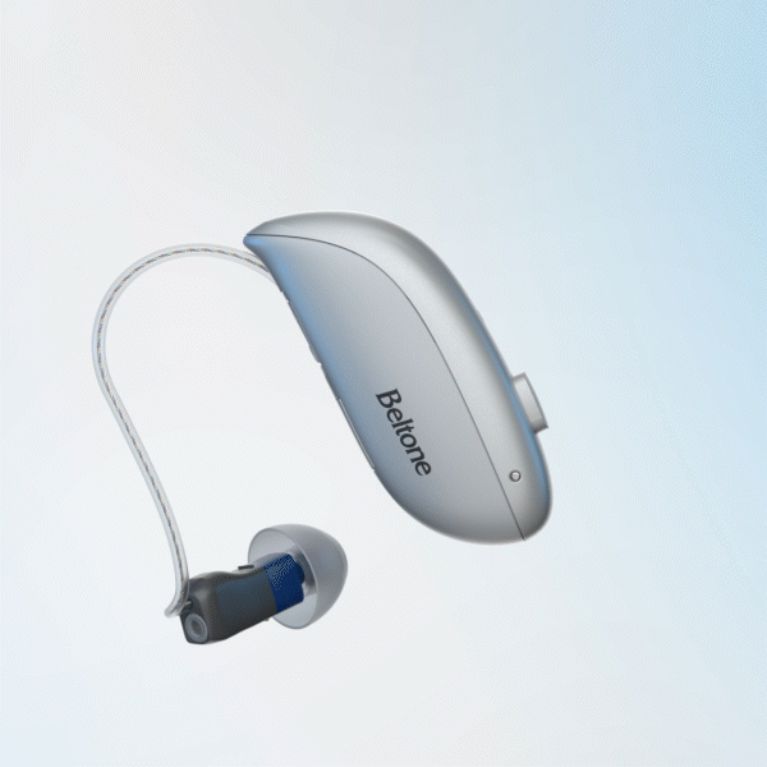
|
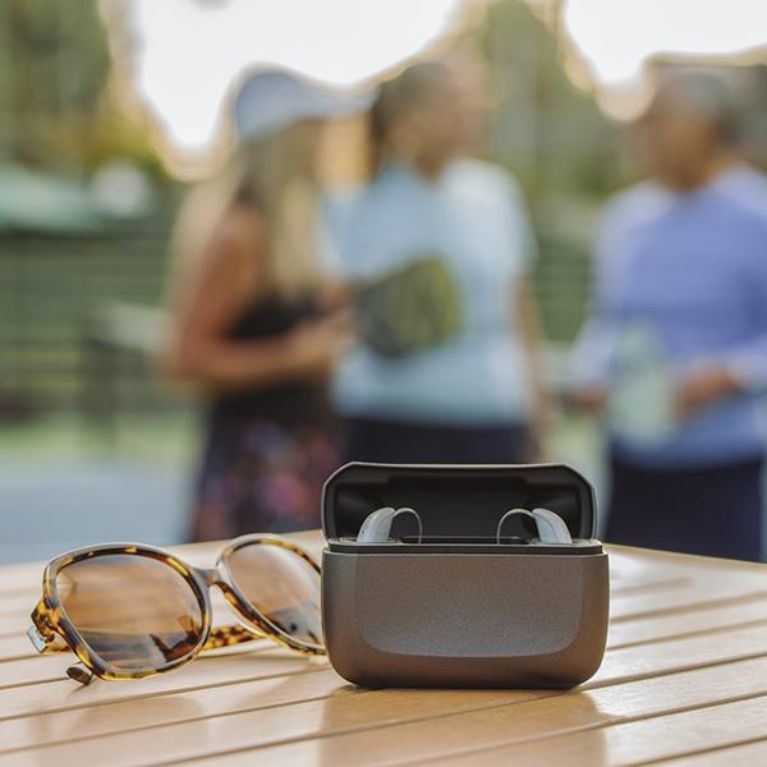
|
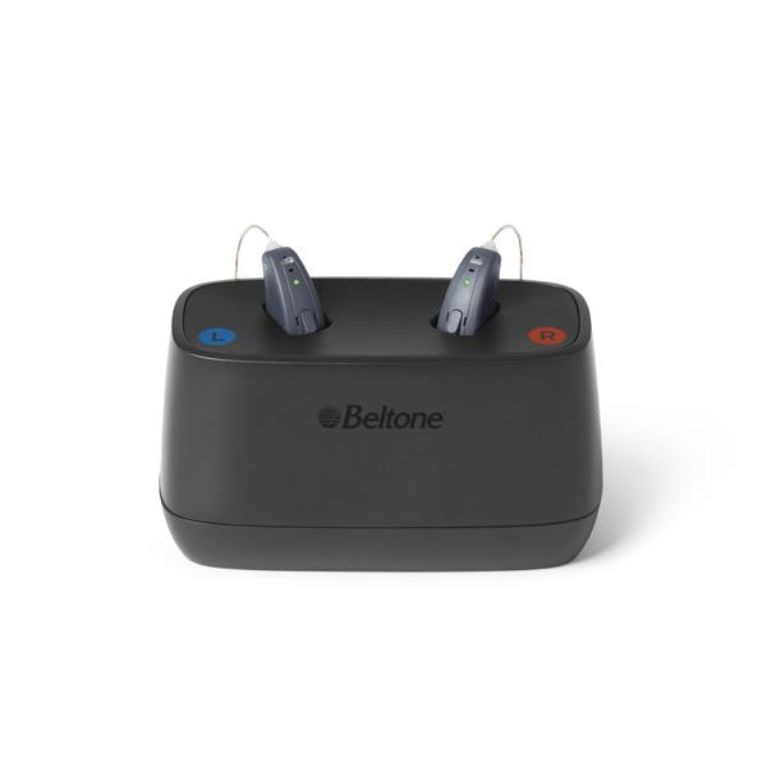
|
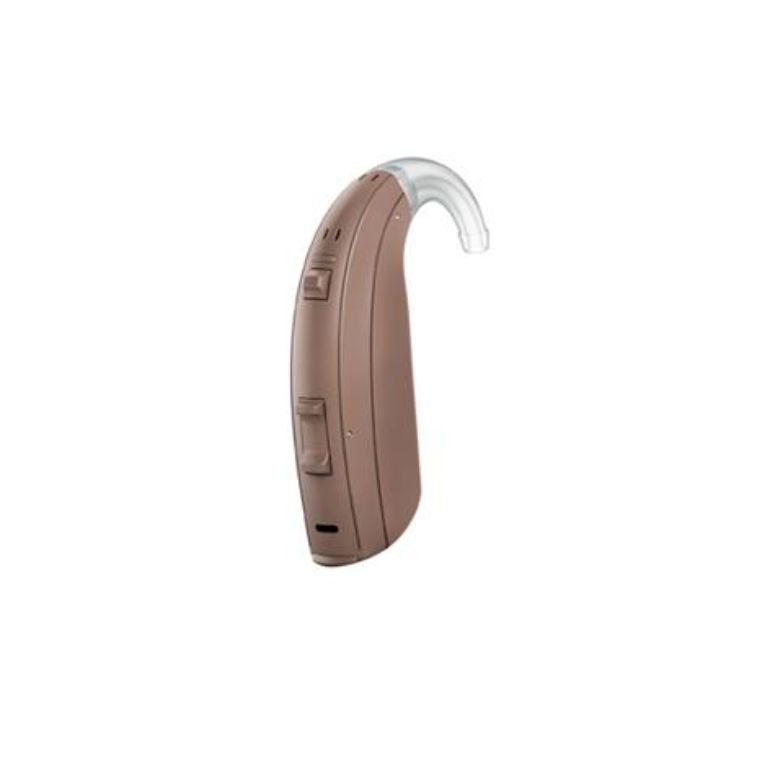
|
|
| Beltone Serene™ | Beltone Achieve™ | Beltone Rely™ | Beltone Boost Ultra™ | |
| Rating | ||||
| Price | Varies by location and model | Varies by location and model | Varies by location and model | Varies by location and model |
| Style | Completely-in-canal (CIC), In-the-canal (ITC), In-the-ear (ITE), Receiver-in-ear (RIE), Behind-the-ear (BTE) | CIC, ITE, RIE, BTE | CIC, ITC, ITE, RIE, BTE | BTE |
| Level of hearing loss treated | Mild to severe | Mild to severe | Mild to severe | Severe to profound |
| Battery | Rechargeable and disposable | Rechargeable and disposable | Rechargeable and disposable | Disposable |
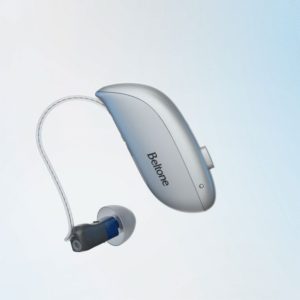

Key product features
What you should know
The Beltone Serene™ offers advanced hearing support, focusing on sound clarity and connectivity, which is ideal for users seeking premium features.
- Serene’s surround-sound technology enhances speech clarity by capturing sounds from all directions, which is excellent for noisy settings.
- As a premium model, Serene can be more costly than basic over-the-counter (OTC) hearing aids.
- Serene is best for people with mild to severe hearing loss who want discreet, high-tech hearing aids with Bluetooth connectivity, hands-free calling, and a companion app, Beltone HearMax™.
- Serene is only available by prescription through Beltone Hearing Aid Centers.
- Serene is available in multiple styles and battery options.
Beltone Serene™ overview
Serene is Beltone’s newest and most advanced hearing aid line, thanks to its excellent sound quality and features. Introduced in 2023, Serene comes in several styles to suit different preferences, including the micro receiver-in-ear (RIE), RIE, behind-the-ear (BTE), custom completely-in-canal (CIC), custom in-the-canal (ITC), and custom in-the-ear (ITE) models. The Serene micro RIE is 25% smaller than Beltone’s previous RIE models, making it an excellent option for invisible hearing aids. The Serene line also offers flexibility with rechargeable and disposable battery options, allowing users to choose what works best for them. Here’s a breakdown of each style:
- Micro RIE: The smallest and most discreet RIE model uses a rechargeable battery. It’s compatible with CROS/BiCROS transmitters for single-sided deafness (SSD).
- RIE: Uses disposable batteries and is compatible with CROS/BiCROS transmitters for SSD.
- Custom CIC: Fits entirely within the ear canal, making it nearly invisible. Uses disposable batteries.
- Custom ITC: Slightly larger than the CIC but still small and discreet. Uses disposable batteries.
- Custom ITE: Resemble earbuds for a modern, discreet look. Uses a rechargeable battery and is compatible with CROS/BiCROS transmitters for SSD.
- BTE: High-powered for those with more severe hearing loss. Uses a rechargeable battery and is compatible with CROS/BiCROS transmitters for SSD.
The Serene is designed to have superior sound quality and advanced features for people with mild to severe hearing loss. It reduces background noise and enhances speech clarity, making conversations easier, even in noisy environments. Serene hearing aids also support hands-free phone and video calls for iOS and Android devices. Users just double-tap their hearing aid to answer calls or stream audio.
One standout feature is Serene’s compatibility with Auracast™ broadcast technology, which allows users to connect directly to public sound systems in airports, movie theaters, and restaurants. (9) Auracast™ will not be available worldwide until 2025, but it is already available for some at-home devices. (10) It will replace older telecoil technology and ensure your devices are future-ready.
With its IP68 rating for moisture and dust protection, Serene offers durability and functionality. These hearing aids are water resistant in fresh water to a maximum depth of 1.5 meters for up to 30 minutes and are sealed against dust. (11) While you shouldn’t wear them swimming or showering, they can withstand sweaty workouts and the occasional rain shower.
Beltone offers a unique and personalized experience, with over 1,500 hearing aid centers across North America. To begin your journey, you’ll visit a Beltone Hearing Aid Center for an in-person consultation and a prescription for your hearing aids. Beltone’s professionals will guide you through the hearing test, help you select the right hearing aid model, and ensure it’s properly fitted and calibrated. As a Beltone customer, you can take advantage of telehealth video consultations, allowing you to receive adjustments, troubleshooting, and support from the comfort of your home.
For those with Bluetooth-compatible models, Beltone’s mobile app can help you manage your hearing aids. The HearMax™ app lets users control their hearing aids directly from their smartphones. Users can adjust volume, switch programs, fine-tune sound settings, and manage accessories like the MyPAL Micro and TV Link 2. It even includes a tinnitus management feature that helps alleviate bothersome ringing by generating soothing background sounds. This type of sound therapy has been shown to effectively treat tinnitus in studies, making the Serene a great choice if you’re looking for hearing aids for tinnitus. (12) Additionally, Beltone offers the HearPlus™ app for Apple Watch, enabling users to control their hearing aids right from their wrists, from adjusting sound to locating them when they’re lost.
Beltone customers also benefit from Belcare, a service package that includes annual hearing assessments, a 30-day trial period, and up to 48 months of warranty coverage with full loss and damage protection. Also, if your hearing loss worsens within two years of your purchase, Beltone will upgrade you to a more powerful hearing aid at no additional cost. Belcare offers service across Beltone’s extensive network, so you can receive help even while traveling.
Beltone also launched the Great Start program in 2023, an online step-by-step tutorial to help new users adjust to their hearing aids over 30 days. The program covers everything from getting started with the HearMax™ app to maintaining your hearing aids, and upon completing all six learning sessions, users receive a $25 gift card for use in Beltone’s online store.
What customers are saying
Beltone earned 1.7 out of five stars on Consumer Affairs from an average of nearly 700 reviews. In several five-star reviews, happy customers praise Beltone’s customer service and cleaning and maintenance options.
“My experience with Beltone Hearing Aids and Alana began in February of 2019 when I was diagnosed with mild hearing loss and was fitted with the Amaze hearing aids… I have yet to have a problem that Alana was unable to fix for me. I have always been able to schedule an appointment in a timely fashion and have never waited more than a few minutes in the waiting room. I also have never felt rushed,” says Mary C. on Consumer Affairs.
Several unsatisfied customers complain about the inconvenience of visiting a Beltone Hearing Aid Center for repairs or device management. Many reviewers say they schedule appointments only to find the center closed when they arrived.
“I am not complaining about the hearing aids as they are good, which for $5000 they should be. But since purchasing them, [Beltone has] closed their office, and there is nowhere close to get them serviced. The little tip on the end has to be replaced fairly often, and since the closest office is miles away, I couldn’t get them replaced,” says Audrey on Consumer Affairs.
Other customers complain about the lack of transparent pricing, pushy sales tactics, or receiving an offer for a “free” hearing exam, only to be told the exam wasn’t free if they didn’t agree to purchase a device.
“According to online Beltone ads: “schedule a free appointment.” Then in person, [the Beltone provider] said the exam is free only if you agree to buy our hearing aids, or free, but we won’t give you the results or audiogram if you go elsewhere,” says Margo. M on Consumer Affairs.
Who the Beltone Serene™ hearing aid is recommended for:
- Individuals with mild to severe hearing loss.
- People who want a discreet hearing aid.
- Tech lovers who prioritize features like Auracast™ streaming and hands-free calling.
- Users looking for moisture- and dust-resistant hearing aids.
Who the Beltone Serene™ hearing aid is not recommended for:
- Buyers who do not live near a Beltone Hearing Aid Center.
- People with profound hearing loss.
- Budget shoppers.
How we rated the Beltone Serene™
To learn more, read our full hearing aids testing methodology.
We score hearing aids based on the following criteria:
- Features: Durability, battery options, hearing loss range, wireless connectivity, water resistance, and safety features.
- Value: Insurance coverage and financing options.
- Customer experience: Shipping, warranty, and customer support.
Warranties and policies
Beltone offers a range of warranties and policies to protect your investment in hearing aids, all covered under its Belcare program. Here are some key details:
- 30-day trial period: Beltone allows you to return your hearing aids within 30 days for a full refund, giving you ample time to ensure they meet your needs.
- Warranty and loss/damage coverage: All new Beltone hearing aids come with a one-year limited manufacturer’s warranty for repairs and replacement due to defects. Additionally, the first year includes protection against loss, theft, or accidental damage, though a deductible may apply. Beltone also offers extended coverage plans that can last up to three years for extra peace of mind.
- Two-year hearing loss protection: If your hearing worsens within two years of purchasing your hearing aids, Beltone will provide a more powerful model at no extra cost.
- Lifetime care: Under Belcare, you can receive annual hearing assessments at no cost, ensuring your hearing aids are still optimized for your current hearing levels. You can also access any of Beltone’s 1,500+ hearing care centers for ongoing support.
One downside of Beltone hearing aids is that they are locked, meaning only certified Beltone professionals can make adjustments beyond minor tweaks like changing the sound setting and volume. This policy is common among large hearing aid providers. Beltone has a large network of care centers. However, one of our expert testers, who lives in Raleigh, NC, found that the closest hearing care center to them is over an hour away. This is something to consider before purchasing a Beltone device, especially if you live in a remote area, do not drive, or do not have access to transportation.
Specs
| Type | Prescription |
| Styles | CIC, ITC, RIE, BTE |
| Battery | Rechargeable and disposable options |
| Bluetooth | For streaming and hands-free calls |
| App | HearMax™ app |
| Water resistance | IP68 rated |
| Trial period | 30 days |
Additional models from Beltone
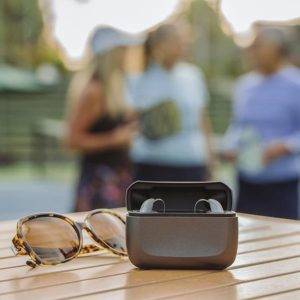
What you should know
The Achieve hearing aid line was Beltone’s flagship model before the Serene and still stands out for its advanced surround-sound technology, which provides a 360-degree sound experience. Unlike traditional hearing aids, which focus on sounds in front of the user, Achieve captures audio from all directions, offering a more immersive and natural hearing experience. This feature significantly enhances speech clarity in noisy environments, making it an excellent option for those who often find themselves in loud settings.
Available in several styles, including mini RIE, RIE, BTE, ITE, and CIC, Achieve caters to many degrees of hearing loss, from mild to severe. Its Bluetooth connectivity enables streaming from smartphones, and the rechargeable hearing aids have 30 hours of battery life on a single charge. The IP68 rating ensures the devices are resistant to sweat and moisture, making them durable for everyday wear. It’s similar to the Serene, but is an older model.
Who the Achieve is recommended for:
- People who want a high-performance hearing aid with a natural sound experience.
- Active adults who want a durable, rechargeable hearing aid with a long battery life.
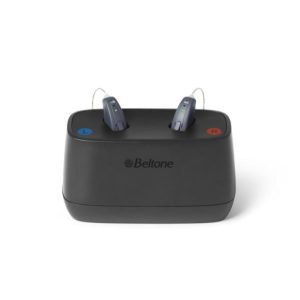
What you should know
The Beltone Rely line offers a high-quality hearing experience at a lower price point without sacrificing essential features. Rely includes rechargeable models and wireless connectivity for iPhone and Android devices, allowing users to stream audio directly from their smartphones. While some lower-tier models do not support direct audio streaming, they remain compatible with the HearMax™ app, giving users control over volume adjustments and sound settings. This makes Rely a great choice for those new to hearing aids or looking for an affordable upgrade.
The Rely line offers BTE, RIE, ITE, ITC, and CIC styles, making it versatile for different levels of hearing loss. Rely incorporates Bluetooth Low Energy (Bluetooth LE) streaming protocols, ensuring minimized battery usage during streaming. (13) The IP58 rating signifies protection against dust (although not completely dust-proof like the IP68 models) and is highly water resistant for workouts and rain storms. (14)
Since Rely is Beltone’s budget model, it lacks the wide range of features and styles the Serene offers.
Who the Rely is recommended for:
- Shoppers on a budget.
- People who want easy-to-use hearing aids without lots of extra tech features.
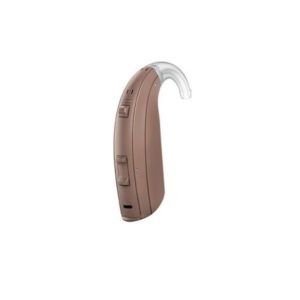
What you should know
The Beltone Rely line offers a high-quality hearing experience at a lower price point without sacrificing essential features. Rely includes rechargeable models and wireless connectivity for iPhone and Android devices, allowing users to stream audio directly from their smartphones. While some lower-tier models do not support direct audio streaming, they remain compatible with the HearMax™ app, giving users control over volume adjustments and sound settings. This makes Rely a great choice for those new to hearing aids or looking for an affordable upgrade.
The Rely line offers BTE, RIE, ITE, ITC, and CIC styles, making it versatile for different levels of hearing loss. Rely incorporates Bluetooth Low Energy (Bluetooth LE) streaming protocols, ensuring minimized battery usage during streaming. (13) The IP58 rating signifies protection against dust (although not completely dust-proof like the IP68 models) and is highly water resistant for workouts and rain storms. (14)
Since Rely is Beltone’s budget model, it lacks the wide range of features and styles the Serene offers.
Who the Boost Ultra is recommended for:
- People with profound hearing loss.
- Adults who don’t want a discreet hearing aid.
Beltone Serene™ vs. competitors

|
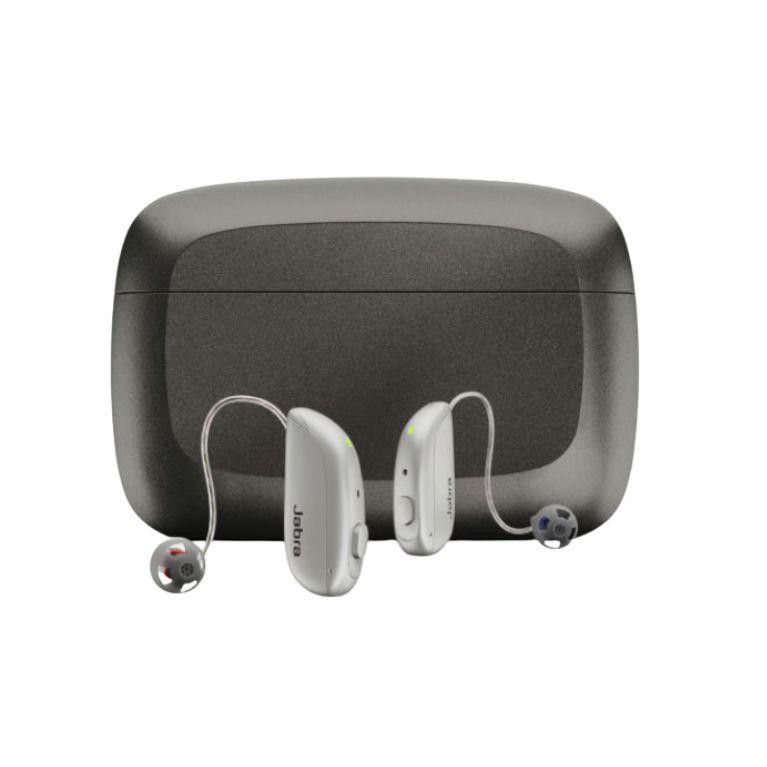
|

|
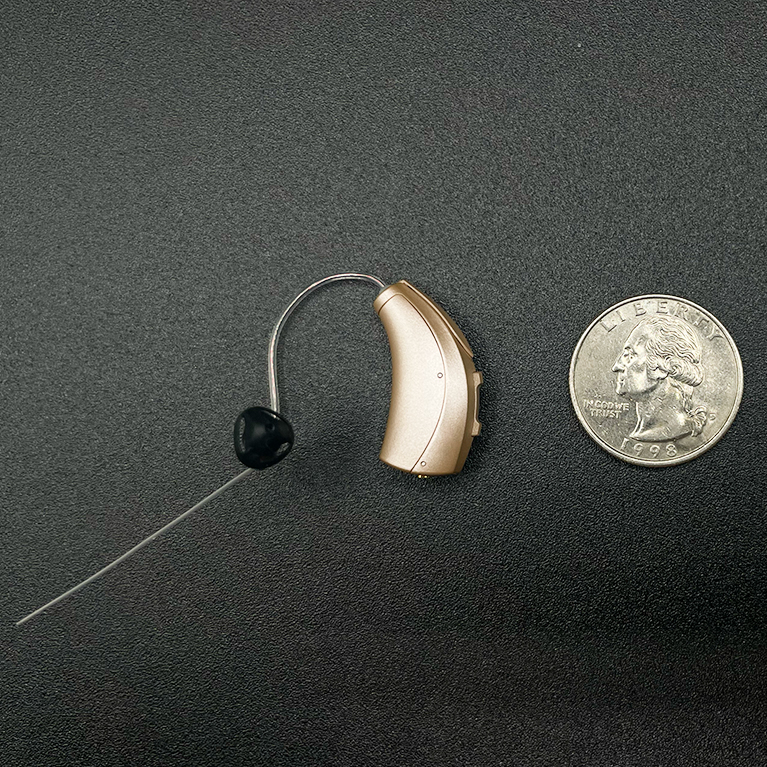
|
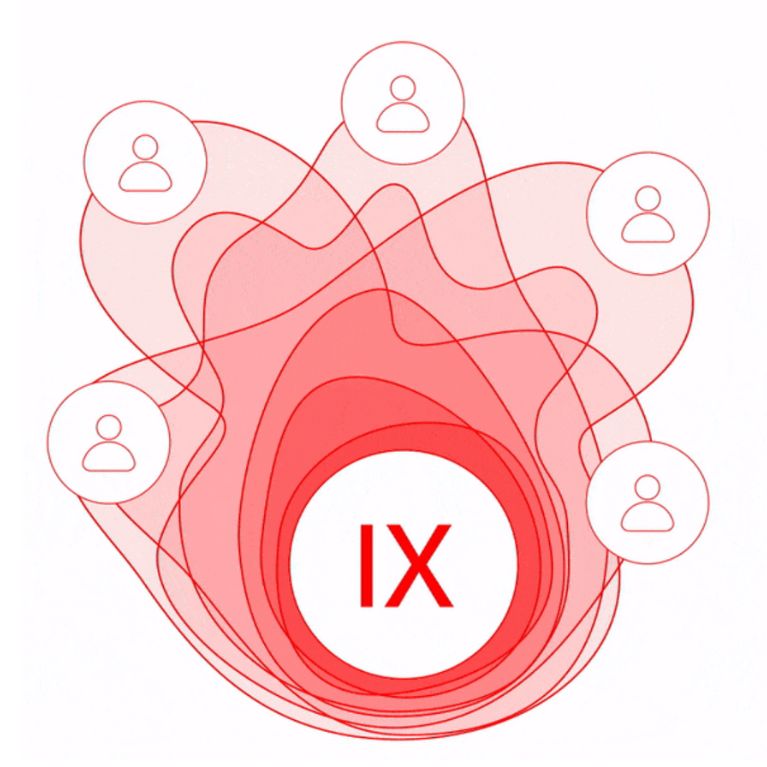
|
|
| Beltone Serene | Jabra Enhance Select 500 | MDHearing Neo XS | Starkey Evolv AI | Signa Integrated Xperience | |
| Rating | |||||
| Price | Around $2,000–$9,000 | $1,795 or $1,995, depending on package | $397 | $2,398–$4,798 | $2,398–$4,798 |
| Type | Prescription | OTC | OTC | Prescription | $2,398–$4,798 |
| Style | Micro RIE, RIE, CIC, ITC, BTE | RIC | ITE | BTE, ITE, ITC, IIC, CIC, RIC | IIC, CIC, RIC |
| Battery | Rechargeable and disposable | Rechargeable | Rechargeable | Disposable and rechargeable | Rechargeable |
| Bluetooth streaming | Yes | Yes | No | Yes | Yes |
The Beltone Serene is ideal for individuals with mild to severe hearing loss who want premium features like Bluetooth streaming and Auracast™ technology and are willing to visit a Beltone Hearing Aid Center for fittings and device management.
Starkey hearing aids, specifically the Evolv AI, are another prescription device with many similar features to Beltone’s Serene line. Like Serene, Evolv AI comes in several styles to suit different preferences, has the option for disposable or rechargeable batteries, and offers Bluetooth connectivity. Evolv AI stands out from Serene because it uses AI technology to optimize sound clarity and has fall detection and tracking capabilities.
Signia hearing aids are also prescription devices. The Integrated Xperience is Signia’s top-of-the-line model. Like the Serene, it comes in multiple fits and has Bluetooth connectivity. These rechargeable hearing aids have a 39-hour battery life (compared to 30 hours on some Beltone devices), but they do not come in a BTE style.
Jabra hearing aids are more affordable hearing solutions. These OTC hearing aids come in several styles. The Jabra Enhance Select 500 is best for those seeking a budget-friendly hearing aid that’s rechargeable and has high-tech features like hands-free calling and Bluetooth connectivity.
MDHearing hearing aids are another over-the-counter option. Affordable hearing aids, like the Neo XS, are a good starter device for people with mild to moderate hearing loss who don’t want tech features like Bluetooth.
Beltone hearing aid prices
Based on our expert knowledge, prescription hearing aids can cost anywhere from $2,000 to over $9,000. However, Beltone’s pricing is very difficult to come by. This was a common complaint from many customer reviews and was our experience as well. We contacted our local Beltone store, but they would not give us pricing information. We reached out to Beltone’s corporate office to learn more. A spokesperson told us Beltone “doesn’t set national pricing” and did not give us a price range for the devices.
We can tell you that Beltone hearing aids come in a wide range of prices based on the power level, style, technology, and features. However, you cannot be quoted any pricing without first undergoing evaluation at a Beltone Hearing Aid Center.
Many customers on Consumer Affairs say their devices cost between $2,000 and $5,000. However, others say they were quoted over $10,000 for a Beltone device. “[The] salesperson was very polite and informative at first but tried to sell the most expensive Beltone hearing aids at $10,000. After two weeks, I tried to get my money back; they were resistant but finally agreed. [They] allowed me to try a cheaper Beltone ($5,000) on loan, which I appreciated,” says Ron M. on Consumer Affairs.
Beltone attributes its higher price point to advanced technology and extensive aftercare services. Financing options, leasing plans, and trade-in programs are also available to help make hearing aids more affordable.
Customers can pay via cash or credit card. Financing options vary, with terms and participation differing by location. For those interested in leasing, some Beltone centers offer 48-month leasing plans with fixed monthly payments. Leasing includes full warranty coverage and the flexibility to upgrade to the latest technology as early as 36 months in. To ensure the best option, prospective buyers should consult with their local Beltone center to confirm available financing plans and insurance participation.
Beltone vs. Miracle-Ear
Beltone and Miracle-Ear are prescription hearing aid providers with extensive networks of hearing centers. Both brands offer advanced technology, including Bluetooth streaming, rechargeable options, and customizable sound settings. Beltone’s Serene line stands out with its Auracast™ technology for public audio streaming, while Miracle-Ear offers features like telecoil connectivity. Each brand offers extensive customer care, though both sell locked hearing aids, limiting service options to their certified providers.
How to choose the best hearing aid for you
To choose the best hearing aid for you, it’s important to consider several factors, such as the severity of your hearing loss, lifestyle needs, and budget. Start by getting a hearing test from a licensed audiologist to assess your level of hearing loss. This will guide you toward the right type of device, whether it’s a more powerful BTE style or an invisible CIC model.
If you spend a lot of time in noisy environments, look for hearing aids with advanced noise reduction and directional microphones to help filter out background noise. If you frequently use smartphones, Bluetooth hearing aids let you stream calls, music, and TV audio directly to your hearing aids, making daily life more convenient.
Additionally, consider the maintenance and support that come with your hearing aids. Rechargeable batteries can save you the hassle of frequent replacements, while remote programming features allow you to adjust your device settings from home without visiting an office. Be sure to factor in long-term costs, such as warranties, follow-up care, and insurance coverage, as these can significantly affect your overall experience and satisfaction with your hearing aids.
Related post: How do hearing aids work?
FAQs
Is Beltone reputable?
Yes, Beltone is a reputable company with a long history in the hearing aid industry. It’s known for providing high-quality hearing aids backed by advanced technology. Beltone is part of GN Group, a global leader in hearing technology, and has a network of more than 1,500 Hearing Aid Centers across North America.
What is the average cost of a Beltone hearing aid?
Beltone’s pricing is difficult to pin down. Based on our expert knowledge, prescription hearing aids range from around $2,000 to $9,000 per pair, depending on the model and features. We estimate Beltone devices are similarly priced.
Is Beltone FDA-approved?
Yes, Beltone hearing aids are FDA-approved prescription medical devices. All hearing aids sold in the United States must meet strict regulations set by the FDA to ensure they are safe and effective for individuals with hearing loss. (15)
Our experts
Dr. Heidi Moawad
Dr. Heidi Moawad is a neurologist and professor at Case Western Reserve University School of Medicine in Cleveland, Ohio. She serves on the editorial board of Neurology Clinical Practice and is a reviewer for Neurology. She is on the board of Medical Examiners.
Krista Manning
Krista Manning is an accomplished medical copy editor and fact-checker who stands out in the pharmaceutical, health, and wellness domains. With a meticulous eye for detail and a command of medical language, Krista ensures the accuracy and clarity of content. Beyond her professional expertise, Krista is an advocate for mental health awareness. Recognizing the crucial intersection of psychological and physical well-being, she actively contributes to projects that promote mental health awareness within the healthcare narrative. Krista’s commitment extends beyond the pages she edits, emphasizing the holistic nature of health communication.

Lauren Sherman, MS
Fortune Recommends Writer
About Author
Sources
- Lin, F. R., Niparko, J. K., & Ferrucci, L. (2011). Hearing loss prevalence in the United States. Archives of Internal Medicine, 171(20), 1851–1852. https://pmc.ncbi.nlm.nih.gov/articles/PMC3564588/
- Age-Related Hearing Loss (Presbycusis). National Institute on Deafness and Other Communication Disorders. Updated March 17, 2023. https://www.nidcd.nih.gov/health/age-related-hearing-loss
- Masterson, E. Measuring the Impact of Hearing Loss on Quality of Life. April 27, 2016. https://blogs.cdc.gov/niosh-science-blog/2016/04/27/hearing-loss-years-lost/
- Shukla, A., Harper, M., Pedersen, E., Goman, A., Suen, J. J., Price, C., Applebaum, J., Hoyer, M., Lin, F. R., & Reed, N. S. (2020). Hearing Loss, Loneliness, and Social Isolation: A Systematic Review. Otolaryngology–head and neck surgery: official journal of American Academy of Otolaryngology-Head and Neck Surgery, 162(5), 622–633. https://pmc.ncbi.nlm.nih.gov/articles/PMC8292986/#
- Bisogno, A., Scarpa, A., Di Girolamo, S., De Luca, P., Cassandro, C., Viola, P., Ricciardiello, F., Greco, A., Vincentiis, M., Ralli, M., & Di Stadio, A. (2021). Hearing Loss and Cognitive Impairment: Epidemiology, Common Pathophysiological Findings, and Treatment Considerations. Life (Basel, Switzerland), 11(10), 1102. https://pmc.ncbi.nlm.nih.gov/articles/PMC8538578/
- How Hearing Loss Impacts Independence in Older Adults. SoniK Hearing Care Services. March 23, 2022. https://sonikhearing.com/how-hearing-loss-impacts-independence-in-older-adults/
- Yadav, A. K., Ahsan, A., & Kumar, V. (2023). Impact of Hearing Aid Usage on Emotional and Social Skills in Persons With Severe to Profound Hearing Loss. Journal of audiology & otology, 27(1), 10–15. https://pmc.ncbi.nlm.nih.gov/articles/PMC9884987/#
- Hearing aids slow cognitive decline in people at high risk. NIH. Aug. 8, 2023. https://www.nih.gov/news-events/nih-research-matters/hearing-aids-slow-cognitive-decline-people-high-risk
- Auracast™—For Public Locations. Bluetooth. https://www.bluetooth.com/auracast/public-locations/
- Zignani, A. Bluetooth LE Audio, Auracast™ Broadcast Audio, and the Future of Bluetooth Audio. Bluetooth. Feb. 16, 2023. https://www.bluetooth.com/blog/le-audio-auracast-broadcast-audio-and-the-future-of-bluetooth-audio/
- Beyer, M. Definition of the IP68 rating in theory and practice. WIKA. https://blog.wika.com/general/definition-ip-68-rating/
- Liu, H., Zhang, J., Yang, S., Wang, X., Zhang, W., Li, J., & Yang, T. (2021). Efficacy of sound therapy interventions for tinnitus management: A protocol for systematic review and network meta-analysis. Medicine, 100(41), e27509. https://pmc.ncbi.nlm.nih.gov/articles/PMC8519222/
- Bluetooth Vs. Bluetooth Low Energy: What’s The Difference? [2023 Update]. Link Labs. May 17, 2023. https://www.link-labs.com/blog/bluetooth-vs-bluetooth-low-energy
- What is the Difference Between IP68 AND IP58? Paraform. https://paraform.com.au/blog/what-is-the-difference-between-ip68-and-ip58/
- Regulatory Requirements for Hearing Aid Devices and Personal Sound Amplification Products. FDA. Aug 2022. https://www.fda.gov/regulatory-information/search-fda-guidance-documents/regulatory-requirements-hearing-aid-devices-and-personal-sound-amplification-products
